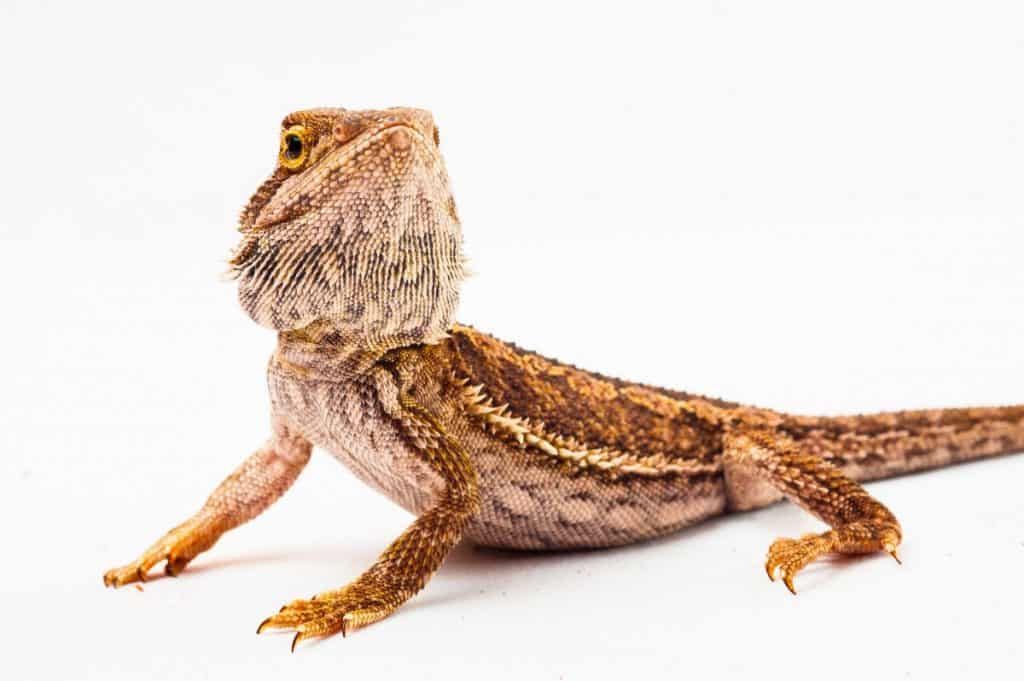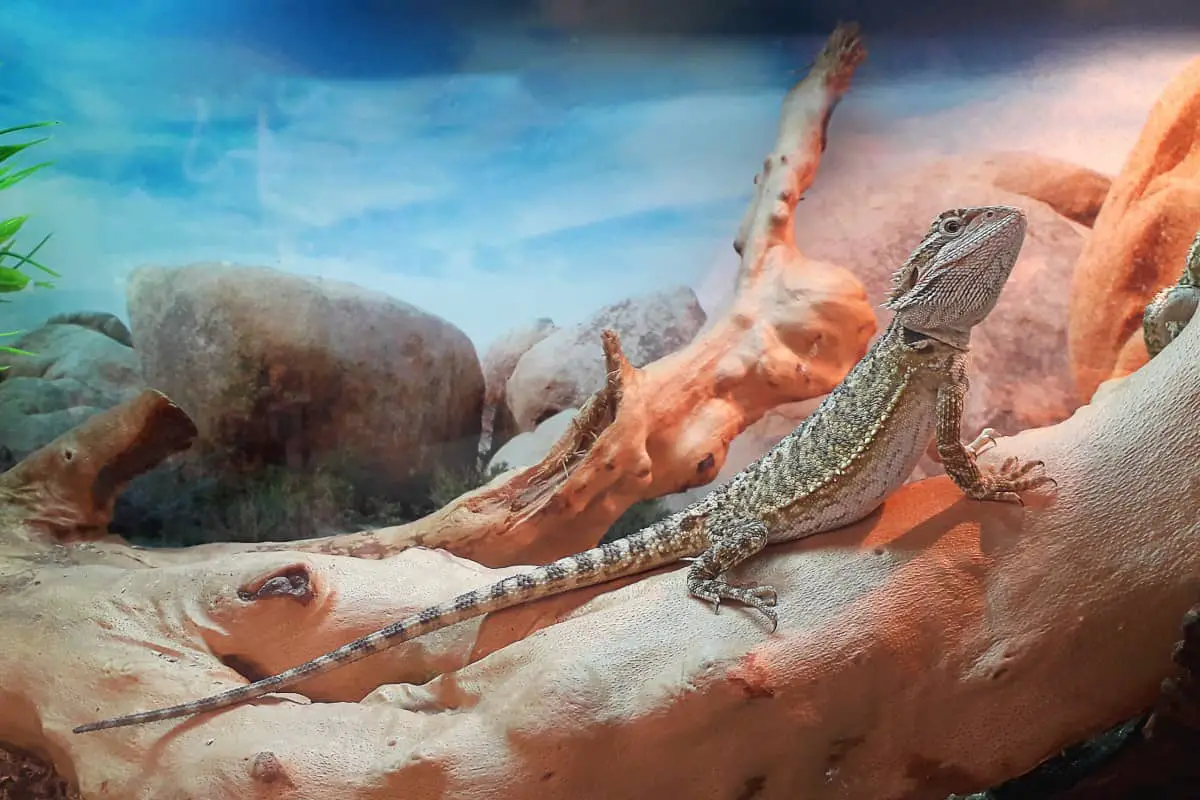Affiliate Disclosure: This post may contain affiliate links. If you make a purchase after clicking on these links I will be compensated at no extra cost to you. However, I never recommend anything I don’t love or wouldn’t use myself!
Is your bearded dragon running back and forth and you have no idea why? It seems like they are on a mission of some kind! If they continue to engage in this kind of behavior, and it’s starting to worry you, have no fear; there’s probably a simple explanation.
If a bearded dragon is running back and forth, what does it mean? When your bearded dragon is running back and forth, stress is likely the cause. This behavior is one of a bearded dragon’s ways of expressing that it is stressed, is too hot inside the enclosure, or needs some exercise or attention.
If you see your bearded dragon behaving differently and are unsure of the reason, there is no need to worry. Here, we are going to discuss some of the behaviors exhibited by bearded dragons, and what is behind them so you can best attend to the needs of your little bearded buddy.
Why Does a Bearded Dragon Run Back and Forth?
Apparently, there are about 73 different behaviors your bearded dragon can exhibit, based upon local stimuli in its environment.
The different behavior exhibited can depend on whether there are other bearded dragons or animals in its territory, or things like habitat temperature, social hierarchy, and various other environmental influences.
When you see your bearded dragon running back and forth or pacing, this is a sign of stress that is typically accompanied by other behaviors such as:
- Not eating as much as it normally does
- “Surfing” the glass of the enclosure that it lives in
- Hiding a lot more than usual
These behaviors in a bearded dragon usually mean that your pet is experiencing stress of some kind. Bearded dragons that become stressed could potentially have issues down the road, so the earlier you detect these behaviors, the better you can address them.
However, it should be noted that similar behaviors can mean different things depending on the situation and stimuli in your bearded dragon’s environment. If you are unsure of why your bearded dragon is behaving in a certain way or cannot figure it out, you may want to go to a reptilian veterinarian.
Behaviors and Signs of a Stressed Bearded Dragon
As mentioned, bearded dragons will exhibit different behaviors depending on the stimuli within their environment and situations. To better access whether or not your bearded dragon is experiencing stress, here is a list of some of their behaviors, signs of stress, and potential causes:
Running back and Forth and Clawing at the Glass
There are a couple of reasons why your bearded dragon could be exhibiting this type of behavior. If you notice your bearded dragon running back and forth or scratching at the class of their terrarium, this is an obvious sign of stress. Here are the top three reasons for this.
1. The Imaginary Intruder
The primary reason that a bearded dragon will do this is from seeing its reflection. Truly. Your bearded dragon may believe that there is another dragon trying to move in on its territory and will frantically pace and scratch at the glass to get to the “other dragon” that it believes is on its turf.
How to Address the Issue:
- If you catch your bearded dragon pacing and scratching at its own reflection in the glass, try changing the interior of the terrarium a bit. See if you can limit the amount of reflection your pet is catching by adding an aquarium or terrarium backdrop to the enclosure. If this stops the pacing, you know what the problem was.
2. It’s Too Hot in the Habitat
Another possible cause for your bearded dragon running back and forth and scratching at the enclosure is because it’s too hot. Bearded dragons, like all lizards, are diurnal. This means that their activity levels are based upon the light and temperature in their environment. The hotter it is, the more it will pace and scratch at the glass of the terrarium.
How to Address the Issue:
- Stabilize and monitor the temperature. The temperature in a bearded dragon’s enclosure needs to be within a range of 80 to 90 degrees Fahrenheit. And within the basking area, it should be about 95 to 110 degrees Fahrenheit. Check the temperature in the habitat and bring it down, if needed. If your dragon stops pacing and scratching, you’ve figured it out.
If you don’t have one, invest in a thermometer for your bearded dragon’s enclosure. It will help monitor and maintenance of the temperature within the terrarium.
Something else to look out for related to temperature: On the other hand, if bearded dragons aren’t warm enough, their activity levels will decrease. If this is the case, the bearded dragon’s appetite may also be affected.
In addition to using a thermometer, you should utilize a humidity gauge. Bearded dragons prefer arid locations. It’s important to keep humidity levels between 35 and 40 percent. If it is too humid, it could affect their level of activity and appetite.
3. Your Dragon Needs Exercise or Physical Contact
Another reason that the bearded dragon could be running back and forth and scratching at the terrarium is that it wants to get out to exercise or be handled.
Bearded dragons are usually solitary and generally don’t like being around other dragons. When it comes to humans though, it’s a different story. Depending on your beardy’s personality, it may just want some “you” time.
How to Address This Issue:
- The solution to this issue is quite simple. Let your bearded dragon out of its enclosure to stretch its legs and spend some time with you!
The Appearance of Stress Marks
This physical manifestation of stress is important to look out for. When dark markings occur on the chin and belly of the bearded dragon, that is not because it’s something cool that they do. They are stressed out, and this is a very easily identifiable indicator for you to look out for.

This is also a common occurrence when you recently acquire bearded dragon. Usually, it is only temporary but if it persists for longer than a few days, you may have to take your bearded dragon to a veterinarian to be examined.
How to Address the Issue:
- If your bearded dragon was recently acquired has started to express signs of stress though the adaption of stress marks, give it a few days to adapt to its new environment.
- While your bearded dragon is displaying stress marks on its chin and underbelly, help it relax and know that it is in a safe location. Be sure to offer food and water regularly. Make sure the temperatures and humidity are correct within the dragon’s new terrarium.
Conclusion
These are some very common signs of stress within bearded dragons. Running back and forth, scratching at the terrarium glass, and a decrease in activity and appetite are issues that you can normally address without having to take your bearded dragon to the vet to be checked out.
However, if you address all the potential issues and their behaviors have not changed then take your bearded dragon to the vet. There could potentially be an underlying health issue that needs to be addressed. Good luck in keeping your bearded dragon happy and healthy!

